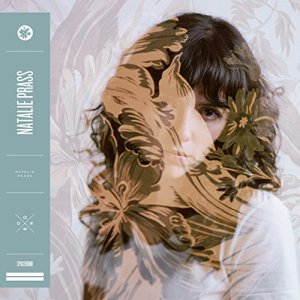I bought my ticket to ShoalsFest 2021 back when COVID seemed like it was going to be in the rear-view mirror. It was in that brief window of optimism before the Delta variant came through, when we thought things would get back to normal. A lot of folks I knew from around the country bought tickets, too. This was going to be kind of a grand gathering after none of us had seen each other in person for so long. As the months moved onward, though, more and more people I knew dropped out. And it was hard to blame them, as Alabama didn’t have the best COVID situation. But I and a few other friends were already from states with less than stellar COVID stats. It would be, as one friend put it, “like traveling from one end of the dog to another.” So we loaded our vaccinated selves into the car and headed down.
And we had a great time.
The two-day Shoals Fest is the brainchild of songwriter Jason Isbell. He hails from the area around Muscle Shoals, Alabama, and had started the festival in 2019 before COVID hit. He had to cancel the 2020 festival, before soldiering on with the 2021 version. It’s situated in a small grassy park on the banks of the Tennessee River, and is one of the more laid-back festivals I’ve ever been to. Part of that may have been due to the fact that some people probably decided not to attend. Saturday, while it had a good crowd, didn’t seem at capacity, and Sunday’s threat of Biblical rain probably kept more people away. So there was plenty of room to move around; very short lines (if any) for drinks, food, or portapotties; and a great vibe.

Both nights kicked off with a short set for the kids by Farmer Jason (aka Jason Ringenberg of Jason and the Scorchers fame). On Saturday night, he was followed by Cedric Burnside, who laid down killer hill country blues with just a single thunderous drummer behind him. Amanda Shires offered up her own rock-filled set, and soul legend Candi Staton absolutely killed it with a set that contained hits from her early days all the way to her disco era.
After that, it was time for Lucinda Williams. I’d forgotten that Williams had suffered a stroke back in November of 2020, so it was jarring to see her led out by one of her crew to a chair at the front of the stage. She addressed the issue head-on, explaining to people about her stroke and her recovery. She was in fine voice, sounding just like she always had. She missed a couple of lyrics, but it was no big deal. The crowd rallied around her, and the band (as loud and rocking as Lucinda Williams’s bands always are) played in what can only be described as a protective fashion, making sure what few lapses there felt as seamless as possible. Williams stood up for the last couple of songs, and it was quite a performance.
Saturday night finished up with Jason Isbell & the 400 Unit. I’ve seen Isbell over a half-dozen times, but this was easily the best he’s ever sounded. Isbell’s mixes (at least when I’ve seen him) have often had trouble separating his vocals from the music, which is a problem for a singer-songwriter with lyrics as good as Isbell’s. But this night’s mix was flawless and clear. It was a fairly mellow set, and we joked that we must be getting “NPR Jason” on this night because he’d for sure be rocking the next night when the slate was overflowing with full-on rock bands.

Sunday, after the intro Farmer Jason set, kicked off with the Pine Hill Haints. The Haints make good use of instruments like mandolin, accordion, fiddle, and washboard to create a rock sound full of Southern Gothic singing saw weirdness. Not all of their stuff works for me, but I’ve found them increasingly more intriguing. I think they’re circling in on something special. Sunday was under the threat of crazy storms, and it started to sprinkle during the Haints set. Thankfully, that passed and the weather cleared up to be a gorgeous day. Just over the river, you could see the storms passing on the other side of the ridge, barely missing us.
Next, it was my first time seeing Centro-Matic, who were reuniting here after disbanding in 2014. Isbell sat in with them, playing along on a gold-top Les Paul. The Centro-Matic set was loud, brash, and cathartic. The people I was with, who’d seen the band many times, raved about how amazing the set was. One thing I noticed was that every time the drummer went off, and he went off a lot, the security guards would turn around and nod approvingly, as if to say, “this guy is layin’ it down!”
Slobberbone hit the stage next. Another band I’d never had the chance to see before, I was really looking forward to this one. I think Brent Best is such an underrated songwriter, and that band can unleash some ragged Replacements-level rock with the best of them. The sound was perfect, probably better than the band has had in many of the clubs they’ve played over the years. Again, I was with people who’d seen the band countless times, who had stories about the band playing through thunder storms, playing for three or four hours, etc. I had nothing to compare this set to, but I loved every second of it, and wished it could have been longer than the truncated 45-minute sets that everyone other than Isbell was getting. Perfect ending to the set with a raucous run-through of “Placemat Blues.”
The Drive-by Truckers were next, and I don’t know what it is about that band that confounds the best sound crews. For the first time that weekend, the sound was muddy and inconsistent. Or maybe it was just where I was sitting. Some of my friends in the pit said it sounded fine (I’d escaped the crush of the pit at this point to go sit in my lawn chair). Maybe I was just sitting in some weird sound dead zone. At any rate, the sound improved over the course the Southern Rock Opera-heavy set. As expected, Isbell came out to join them on a couple of songs: “Heathens” and “The Day John Henry Died.” The band also brought out Patterson Hood’s father David Hood, whose bass playing was an integral part of the Muscle Shoals sound, to play bass on Eddie Hinton’s “Everybody Needs Love.”
As on Saturday, Isbell closed out Sunday night as well. Somehow, his set seemed even more mellow than the night before. Whether it was because he didn’t want to try to top the impossible heights of a set like Centro-Matic’s, or because he knew the rock was coming later, the set was just subtly more low-key. We did get an amazing rendition of “Elephant,” which I haven’t often heard Isbell play. The main set closed with the always-rousing “Ain’t Never Gonna Change” and a cover of Fleetwood Mac’s “Oh Well” (I can’t remember in what order). Then it was time for the encore. Few things on this Earth are better than loud guitars. Except maybe loud guitars with dumb lyrics. And even better than that are loud guitars with smart lyrics. The Truckers’ Patterson Hood and Mike Cooley came out for “Outfit” and “Decoration Day.” The old Drive-by Truckers songs seem to be becoming more of a rarity in Isbell’s sets, so it was thrilling to hear these two songs with a total of four guitars. A perfect, rousing close to a loud night, and to a great weekend.
Can’t wait for 2022.
Notes:
- If you feel safe seeing a concert these days, jump on the chance. The musicians are soooo glad to be back on stage. There’s none of the burnout yet that you’d associate with long tours and the grind of the road. They are feeling fired up and inspired.
- Middle-aged men probably like to think they’re above petty concerns like fashion, etc. but let me tell you, they bring out their t-shirt game at music festivals. The usual ban on wearing shirts advertising the band that’s playing that night seemed to be off the table, but the most egregious sin was probably wearing the same shirt as someone else. There was very little of that, as there were some obscure shirts out there. I can just see these guys opening the t-shirt vault at home, pulling out their tour t-shirt from 1990 and thinking, “Yeah, this is the good stuff right here.” My own wife says she’s never seen me try on t-shirts beforehand like I did for this trip. I told her it was to see which ones were most comfortable, but I think she sees through me.
- Single Lock Records was doing the work this weekend. A small label out of Florence, Alabama, Single Lock is the home of ShoalsFest performers Cedric Burnside and The Pine Hill Haints. They also hosted a Friday night party at Singin’ River Brewery featuring Duquette Johnston, the Prescriptions, and Rock Eupora. A really fun showcase, and the Single Lock folks were friendly and enthusiastic every time I ran into them.
- We wish we’d been able to spend more time in the area, as there’s plenty to see in those parts. Helen Keller’s birthplace is in nearby Tuscumbia, there’s an Indian Mound park and museum nearby, Frank Lloyd Wright’s Rosenbaum House, and the neo-classical styled Wilson Dam is seriously impressive. There’s also, of course Muscle Shoals Sounds Studios and Fame Recording Studios, where so much amazing music was made. We didn’t think about the Shoals Fest weekend really packing the tours full, so we weren’t able to tour either studio. Still, we sufficiently plundered the gift shops. Muscle Shoals Studio is tiny, so amazingly tiny.



 With the recent furloughs at Vox media, the Shutdown appears to be no more. Spencer Hall and Jason Kirk are gone, and while I’d pay good money just to hear Ryan Nanni and Holly Anderson do their own thing, the loss of Hall and Kirk represents a chemistry that can’t be replaced.
With the recent furloughs at Vox media, the Shutdown appears to be no more. Spencer Hall and Jason Kirk are gone, and while I’d pay good money just to hear Ryan Nanni and Holly Anderson do their own thing, the loss of Hall and Kirk represents a chemistry that can’t be replaced.






